Putting two of the world’s most formidable working dogs – one with a bad boy reputation and the other being a highly-prized guard dog – might be the perfect solution for those who would want a fearsome dog for their homes. Unfortunately, the Pit Bull Boxer mix – also known as the American Bullboxer or Bullboxer Pit – is not really a hybrid to be feared. As a matter of fact, people who see it the first time fall in love with its gentle and intelligent nature. It’s not a head-turner, mind you. But there’s something about the Bullboxer Pit that makes it quite an adorable medium-sized hound.
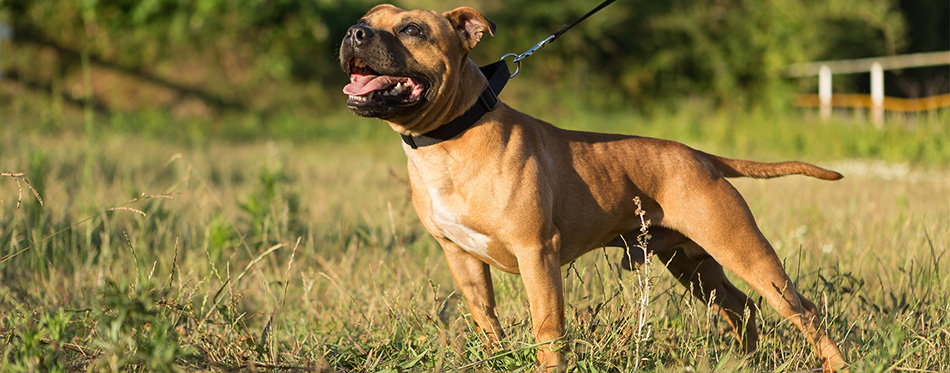
History of the Pit Bull Boxer Mix
We can only surmise that whoever created the Bullboxer Pit may have been a lover of the Pitbull. He perhaps wanted to create a dog that has all the characteristics of the American Pit Bull Terrier, but with the gentler and more amiable character of the Boxer. Of course, we could be wrong, as there really isn’t that much information we could gather about the origins or the history of the Pit Bull Boxer mix. We don’t even know who created it, when it was first crossbred, and where.
Man has been performing crossbreeding long before these designer dog breeds came popping out into the mainstream. While the 1990s is generally thought of as the period when people began looking at crossbreeds with greater interest, these dogs have been around for many years.
Now don’t ask us when. We can tell you the history of the other designer dogs like the Labradoodle and the Goldendoodle, but not the Bullboxer Pit. Maybe you know? You can share with us your thoughts about the possible origins of this designer dog breed and we’d be happy to share it with the rest of our avid readers.
Who are the Parents?
As you may already know, the Bullboxer Pit is a cross between an American Pit Bull Terrier and the Boxer. So, if we are to really understand the Bullboxer Pit or if we want to gain an understanding as to why the dog was designed, we’d better have a look again at its parents.
American Pit Bull Terrier
There are only two major kennel organizations that recognize the APBT as a breed: the American Dog Breeders Association and the United Kennel Club. It is also the subject of several breed-specific legislations in a dozen European countries as well as Canada, Australia, Singapore, New Zealand, and a handful of others. It’s even banned in the UK as well as many parts of the US. This underscores the fearsome reputation that is attributed to the APBT, a reputation it clearly doesn’t deserve.
The American Pitbull Terrier is not a purebred dog; well, it wasn’t originally. It’s a cross between an Old English Bulldog and an Old English Terrier. They were primarily used in bloodsports that featured wild animals in an enclosed ring, gladiator-style. These dogs were used in bull- and bear-baiting. However, because there were already growing concerns for the rights of these animals, many of these blood sporting events morphed into dog fighting scenarios. It’s understandable because it’s a lot easier to bring dogs to a clandestine location than a bull or a bear.
It is because of this history of the American Pit Bull Terrier that people have come to associate it with aggression.
But what many don’t realize is that these dogs were aggressive insofar only as their human owners wanted them to be aggressive. In the hands of a capable, compassionate yet firm trainer or dog owner, the American Pit Bull Terrier is an adorable breed. It is intelligent and can easily obey commands. It is very loyal to its family and can give them the affection that they need. It also has a clownish personality, something that many people don’t associate it with. It has a very friendly disposition, too.
Sadly, many dog owners do not understand the true nature of the Pit Bull. All they see is a courageous, strong-willed, and very aggressive dog that should be perfect for guarding the house and for attacking would-be intruders of the home. It is this mindset of dog owners that has clearly defined the reputation of the APBT as an attack dog. So, when people hear of a dog attack, even if they were not really at the scene of the incident, they’d automatically think that a Pit Bull is involved.
Today, many APBTs are serving in the military, in police organizations, in search and rescue units, and even in rehabilitation facilities. Many are being trained as therapy dogs, behavior modification assistants (think of Daddy and Junior), and even family companion dogs. Remember, a dog is best defined by how its owner interacted with it and cared for it growing up.
This is a sad fact that the APBT has to carry throughout its life. It’s a reputation defined by man, but one that the dog itself will have to suffer.
The APBT can live up to 16 years and grow up to 19 inches tall. It is usually shorter by several inches than the Boxer, but can weigh up to 15 pounds heavier at a maximum of 85 pounds.
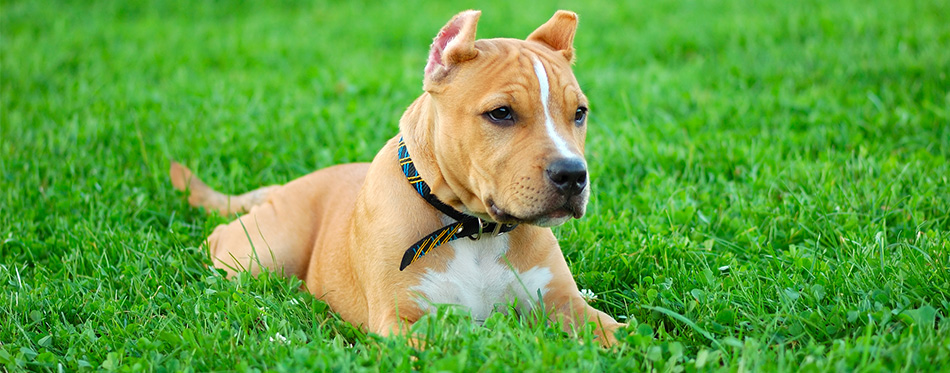
Boxer
The Boxer is fortunate enough not to be typecast as a bad boy in the dog world, unlike the American Pit Bull Terrier. As a matter of fact, it is one of the most adorable breeds. Sure, it doesn’t have dashing good looks to go with its muscular and well-toned built, but its mood-mirroring expressions can easily warm any heart regardless of how stone-cold it can be.
Boxers are very popular family dogs. They have this charming personality that is made very entertaining because of their innate ability to mimic the mood of their owners using only their facial expressions. They have an insatiable and highly energetic curiosity that makes them quite easy to train. Most of all, they are highly obedient dogs.
Perhaps, what is truly admirable with the Boxer is its devotion to its family can only be matched by its suspiciousness of strangers. It won’t attack strangers or show aggression, but the Boxer will be on-guard whenever someone it doesn’t know is within the premises of its property. Its alertness coupled with its remarkable strength and agility makes the Boxer a formidable guard dog.
Like the American Pit Bull Terrier, the Boxer is a crossbreed between an Old English Bulldog and a Bullenbeisser. This also makes crossbreeding the Pit Bull and the Boxer quite a match since they both have a common ancestor – the Old English Bulldog. The Bullenbeisser is one of Germany’s top dogs when it comes to hunting bear, deer, and wild boar. Its powerful bite can seize wild game until human hunters can finish the job. Come to think of it, it’s very much similar to the American Pit Bull Terrier of the 19th century when it comes to bull- and bear-baiting.
A Boxer can grow up to 70 pounds and about 21 to 25 inches tall. It can live up to 12 years, barring any untoward incident.
For more options, check out our detailed review of Dog Food for Boxers.
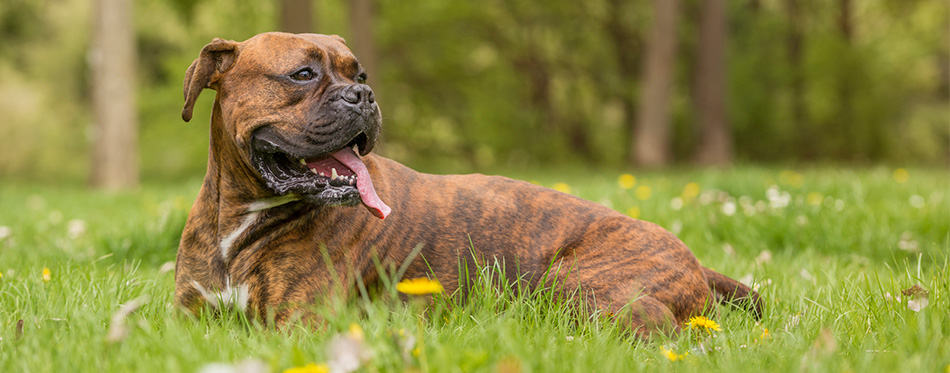
Quick Facts
There are many similarities between the parents of the Bullboxer Pit that it is somehow easy to predict how the puppies will eventually grow. However, be forewarned that crossbreed dogs are never easy to make highly accurate predictions. The following are what we know, nonetheless.
- The Pit Bull Boxer mix is sometimes referred to as the Bullboxer Pit, the Pitoxer, and the American Bullboxer.
- A male Bullboxer can reach a height of 26 inches with some reported to reach 27. Females are shorter by about an inch or two.
- Male Pitoxers can weigh anywhere from 50 to 80 lbs while the females are generally lighter by 5 to 10 pounds.
- Pitoxers have a broad, large head and a relatively short muzzle owing to the brachycephalic nature of the Boxer and the moderately-long muzzle of the Pit Bull.
- They can have the broad chest and long limbs of the Boxer, built into a highly muscular body.
- American Bullboxers can come in various colors such as black, brown, cream, white, fawn, black and tan, and brindle. The coat is always short and smooth, however.
- It is recognized by the ACHC, DBR, DRA, IDCR, and the DDKC as a designer dog breed.
Things You Should Know
We really have to be honest with you. The Pitoxer takes many of the fine (and not-so-fine) qualities of its parents regardless of what designer dog breeders tell you. But if you’re really hell-bent on getting one for your family, we implore you to read and understand the following first.
Training
Training the American Bullboxer should be relatively easy, but only if you have a positive attitude about training dogs and you are a firm believer of positive reinforcement. You see, as smart as the Bullboxer Pit is, it is a very sensitive dog. It doesn’t like being pushed around, mistreated, yelled at, or inflicted with pain. Here’s the thing. The only reason that the American Pit Bull Terrier got its bad reputation is because its owners treated it harshly so that it will become a real aggressor. Treat your Bullboxer Pit well with compassion yet firmness and it will yield to your ministrations.
As such, if you’re thinking of using punishment as a means of training the Pitoxer, then you can forget owning one. In fact, we strongly advise you never to get any dog. These animals deserve an owner who can train them with gentleness yet tempered with firmness. Dogs, especially Pitoxers, look up to humans as leaders. A true pack leader takes care of the needs of the pack. It never hurts them, yet provides a means by which order can be observed.
Feeding
Bullboxer Pits require lots of calories especially if you’re going to train it as a working dog. However, if you’re thinking of making it your family companion, then you’ve got to watch its calorie intake as it is quite prone to obesity. This is where a reduced-calorie, reduced-fat, and high-protein dog food will come in. A typical 70-pound adult male with just the average level of activity may need about 1,500 to 1,600 calories per day. This is if it is already neutered. If it is still intact, then its calorie requirements may jump to 1,700 calories every day. The calorie consumption of Bullboxer Pits should be distributed over 2 or 3 meals per day.
Being muscular dogs means you’ve got to provide plenty of high-quality proteins, preferably animal-sourced since this is easily digestible and comes with all the necessary essential amino acids that dogs need for tissue building. Equally important are antioxidant-rich vegetables and fruits especially since they’re quite prone to infections and inflammatory conditions. Antioxidants can help minimize the effects of inflammatory processes. Don’t forget chondroitin and glucosamine as this heavyweight of a designer dog can surely be afflicted with joint problems.
If you are looking for more options, check out our guide on Dog Food for Pitbulls.
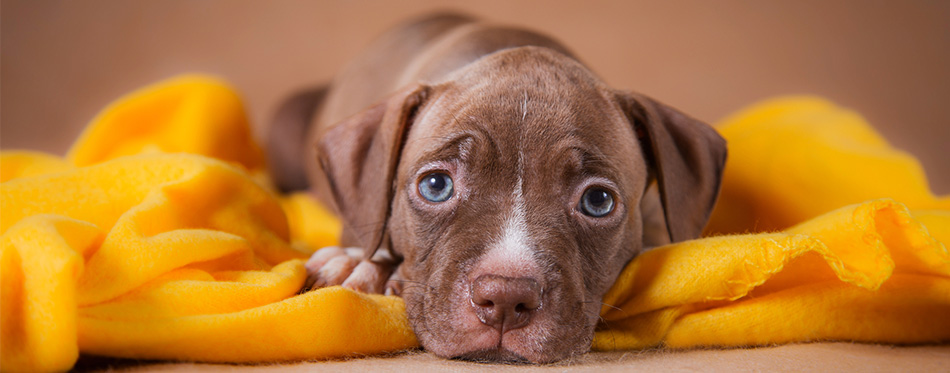
Exercise
Some dog owners cannot seem to appreciate the value of exercise in the life of a dog. Not only is exercise beneficial to the maintenance of the strength and tone of the muscles as well as the full functionality of the joints, it is also invaluable in terms of keeping your Bullboxer Pit happy and contented. Just as training is important for the American Bullboxer, exercise is crucial, too. This is what keeps it sane. You don’t want it to use its powerful jaws in latching onto something that you value like your furniture, bedding, or even carpet.
It is imperative that the American Bullboxer be walked at least 60 minutes twice a day. Add to this its need for playtime where you can easily bond with it. Mental stimulation is a given for all dogs. This is one way you can prevent boredom from setting in and creating more problems on your dog. Remember that the Bullboxer Pit’s parents are both working dogs. You cannot easily erase this from the Bullboxer Pit’s genes.
Socialization
Because of the reputation of American Pit Bull Terriers, there is still a chance that the APBT residing in the American Bullboxer’s genes can still manifest as an aggressive dog. This is especially true if the APBT parent used in the crossbreeding was primarily bred for aggressive purposes such as attack dogs or in dog fighting arenas. The same is true with the Boxer’s tendency to be suspicious with strangers. It is crucial that the American Bullboxer be socialized as a puppy so that these issues can be minimized.
When duly socialized, however, the Bullboxer Pit can be a very adorable hybrid. It is gentle even with small pets. It is not a hunter, after all. However, caution should be exercised when allowing them to play with small children. This dog may not be a giant, but it is very heavy. The good news is that this hybrid can take anything any kid can throw at it in stride. It really doesn’t mind as long as it’s socialized properly.
Grooming
It may have a relatively short coat, but this will never excuse you from the weekly combing and brushing. If you can do it every day, then do it. Remember, brushing is not only to prevent mats and tangles, but also to improve the circulation of blood in the skin. Bathing the Bullboxer Pit can be done twice a year, unless it is pretty obvious that it needs to take a shower right away. Caring for the nails, ears, and teeth are also crucial.
You may also like some of our dog grooming guides, such as dog flea combs, dog shedding brush, dematting tools for dogs, dog nail clippers and dog nail grinders.
Health
Allergies are quite common among Bullboxer Pits. That’s why you’ve got to pay attention to what you feed it. The same is true with heart problems, obesity, and hip dysplasia. These are quite common, but they can be addressed by sound nutrition. Aside from these health problems, Bullboxer Pits can also be afflicted with infections, eye problems, and cancer.
Get an American Bullboxer if you…
- Love the idea of daily walks and lots of doggie playtime
- Can train a puppy using only the proven techniques of positive reinforcement
- Can socialize the American Bullboxer even though it is still a puppy
- Have the personality of a true pack leader
This is not for you if you…
- Lack the patience to train it or socialize it
- Will turn it into a guard dog or an attack dog
- Don’t have a spacious backyard
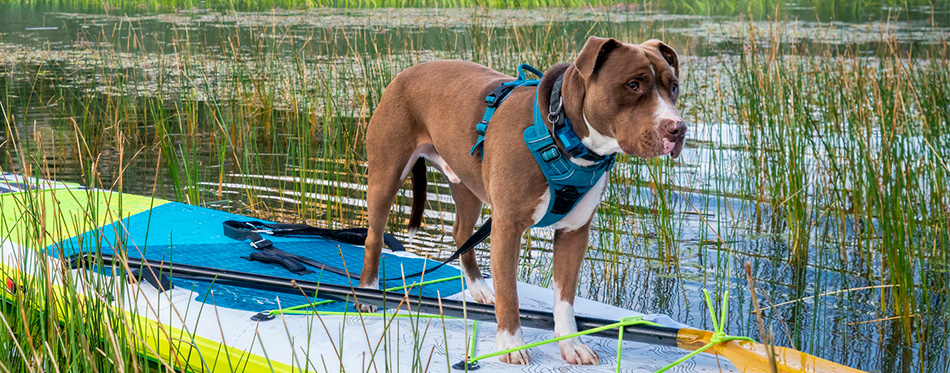
Temperament
Playful and adaptable, the Bullboxer Pit draws its temperament partly from its parents, but mostly from the way it is raised by its human family. This is why it is very important that early socialization and training should be adhered to. It has the alertness and watchfulness of the Boxer and the territoriality of the Pit Bull. However, when socialized well, they can be adorable sweethearts with hulking bodies. It’s well-suited for kids as well as small pets provided it is adequately trained and socialized.
Related Post: Dog Training Books
When it comes to bringing home the American Bullboxer, it is imperative to understand the relationship between how you treat it and the temperament that the dog will show. Be mean to this dog and it will be a really fearsome dog. Pamper it with love and affection while instilling appropriate discipline can make it the best four-legged companion for the family.
Source:
- The Pitbull Boxer Mix – Bullboxer Breed Guide – Animal Corner

